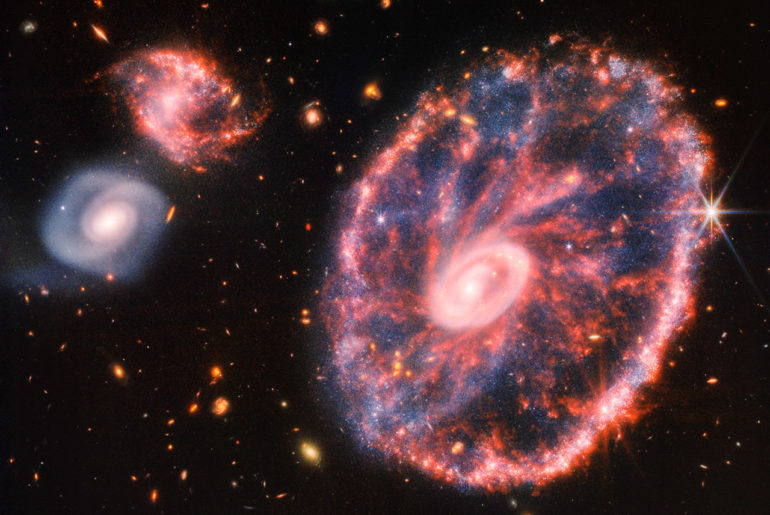
Aside from targeting super-Earths, the James Webb Space Telescope is busy capturing never before observed galaxies, like the Cartwheel Galaxy, which lies 500 million light-years away from Earth in the Sculptor constellation. Its shape resembles that of a wagon wheel and is actually the result of a high-speed collision between a large spiral galaxy and a smaller galaxy not visible here.

This galaxy boasts two rings, consisting of a bright inner ring and a surrounding more colorful ring, which expand outwards from the center of the collision. Due to its shape, the Cartwheel Galaxy is classified as a “ring galaxy,” a structure far less common than spiral galaxies similar to our Milky Way. Webb’s Mid-Infrared Instrument (MIRI) captured the image you see above, revealing that the galaxy is rich in hydrocarbons, silica dust, and other chemical compounds.
- POWERFUL TELESCOPE FOR ASTRONOMY BEGINNERS: The AstroMaster 114EQ delivers sharp optics, a stable equatorial mount, and smooth manual controls, making...
- HIGH-QUALITY 114MM OPTICS: Enjoy views through the 114mm (4.5”) Newtonian reflector, which features high-quality aluminum and SiO₂ coatings and...
- SMOOTH, ACCURATE POINTING: Effortlessly aim and center your target using the two slow-motion control knobs for right ascension and declination whether...
Webb’s observations underscore that the Cartwheel is in a very transitory stage. The galaxy, which was presumably a normal spiral galaxy like the Milky Way before its collision, will continue to transform. While Webb gives us a snapshot of the current state of the Cartwheel, it also provides insight into what happened to this galaxy in the past and how it will evolve in the future,” said the European Space Agency.






